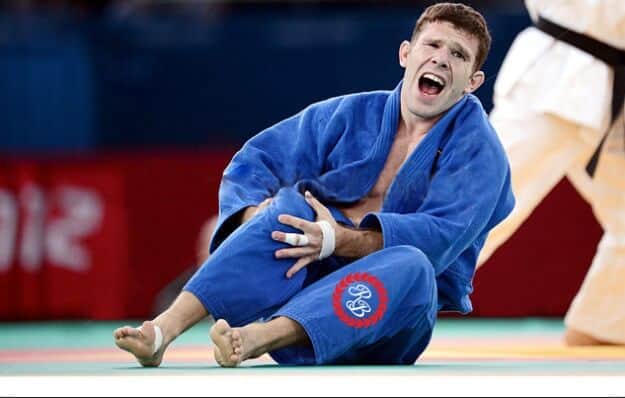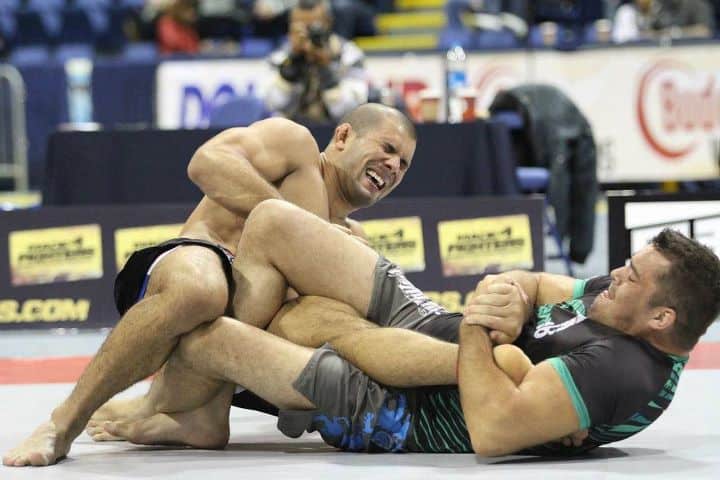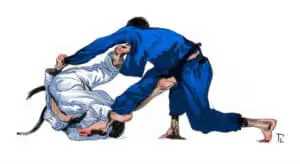You may have seen BJJ in MMA or have a friend who does it and now you are thinking of giving it a go. However you are wondering if the risk of injury makes it too dangerous to try. Not to worry.
Is BJJ safe? Yes BJJ has been rated as the safest contact martial arts in terms of injury rates. BJJ also has a lower injury rate than soccer. The techniques in BJJ have been designed to be performed safely. There is also a strong culture in BJJ of protecting your training partners. If you ever find yourself in a dangerous position you always have the option to tap and restart preventing a lot of potential injuries. Due to the design of the sport and culture BJJ is one of the safest martial arts you can train in.
Will I Get Hurt Doing BJJ?
You may be wondering if BJJ is safe, you have nothing to fear. Brazilian Jiu Jitsu consistently ranks as the safest full contact martial art and is safer than many other sports such as soccer. BJJ has an injury rate of 9.2 per 1000 athletes compared to soccer which has an injury rate of 16.9 per 1000 athletes.
I don’t know many people who are scared of playing soccer but being apprehensive about training BJJ is common. I think if people knew that BJJ has a lower injury rate than soccer, more people would be confident and comfortable giving BJJ a go.
How Common Are Injuries In BJJ?

According to a recent study 85% of people who have trained BJJ for at least 1 year have suffered an injury. However serious injuries in BJJ are very uncommon as 90% of these injuries were minor. If you train long enough you will probably receive a minor injury. No big deal in most cases you will only be out of training for a few days or weeks at most.
The most common BJJ injuries include mild hand, foot and or injuries. The most common Injuries which require medical attention are skin infections such as ringworm/staph or knee injuries. Skin infections are quick and easy to fix with creams and antibiotics and you will be back on the mat within a week or two.
Takedowns are responsible for the majority of the common injuries in BJJ as people fall awkwardly and land on each other.
Of the submission techniques armbars cause the most injury due to people not tapping early enough and the force armbars can place on the tendon and ligaments in the arm and elbow. You can greatly risk your chance of suffering these injuries by implementing the steps laid out below. Armbars are the most common injury in BJJ competitions.
BJJ Injury Statistics

The following statistics are based on a study of Injury data from medical records of 8 BJJ tournaments in Hawaii, USA, between 2005 and 2011.
The identified injury rate observed was 9.2 per 1000 exposures. This equated to 46 injuries out of 5022 exposures. Orthopaedic injuries were the most frequent making up 78% of injuries. Rib injuries were the second most common followed by (15%) cuts and lacerations (6.5%).
The elbow was the most commonly injured joint during BJJ events. The main cause of elbow injuries in BJJ competitions was the armbar. This is likely due to the speed with which this submission is delivered and the short window a person has to tap before injury occurs.
The observed injury rate of 9.2 per 1000 compares favourably to other martial arts. Studies have shown that Judo competitions have an injury rate of 25.2 per 1000 while Taekwondo competitions have an even higher rate of 79.3 per 1000. This is evidence that BJJ is significantly safer than other contact martial arts.
Is BJJ Deadly?
BJJ can be deadly however only in extreme circumstances. If a choke is held for over 1 minute brain damage starts occurring and over 3 minutes death becomes possible. Deaths can also occur due to underlying health conditions whereby intense exercise results in stroke or heart attack. I am not aware of anyone who has died from a choke in a BJJ gym or tournament as consciousness is usually lost within 10 seconds and there would be no reason for the choke to be held past this point.
Deaths from chokes have occured in street fights and altercations with police and military. The likelihood of dying from a heart attack or stroke while training BJJ is extremely small and no different than the chance of dying while training in another high intensity sport. If you are older before training in BJJ you should consult your doctor to make sure your heart is in good condition to further reduce the risk of complications.
Is BJJ Bad For Your Body?

The answer depends on how you train BJJ. If you train everyday, don’t eat healthy, don’t warm up, don’t let your body recover – then yes BJJ will be bad for your body. Overtraining BJJ often results in joint and ligament damage to fingers, hands, elbows, knees, back and the neck. The risk of suffering these issues can be mitigated through regulating your training volume/intensity, warming up properly before training and taking time off to allow your body to heal from injuries.
Many people become addicted to BJJ and don’t take the time to rest from injuries. This can turn a small niggle into a serious chronic injury.
If you train moderately and take care of your body BJJ will have a positive impact on your body. You will increase muscle mass, decrease body fat and increase cardio capability. All physical activity damages your body. It is about finding that right balance where you damage your body just enough and then give it the time to regenerate stronger.
BJJ is the safest contact martial art and has one of the lowest injury rates of any sport. If you are thinking of giving BJJ a go don’t let fear of injuries stop you. The chance of a serious injury occurring is very low. To further reduce your risk of injury, train with a reputable coach, warm your body up before practice and train with people who value your safety.
